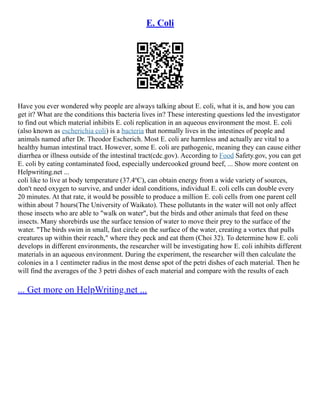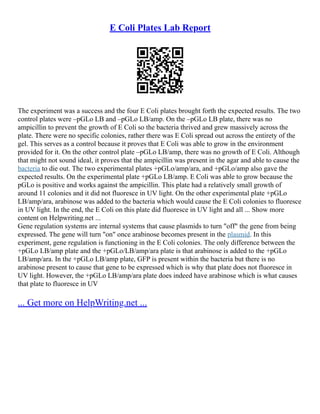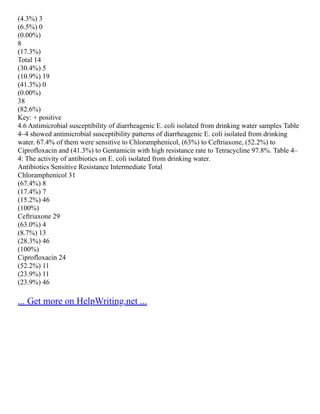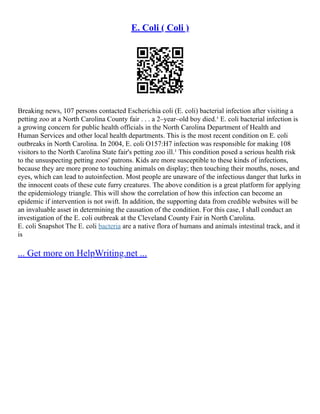The document discusses Escherichia coli (E. coli), a common bacterium found in the intestines of humans and animals. While most E. coli strains are harmless, some can cause illness. The document focuses on E. coli O157:H7, a strain that produces toxins and can cause severe illness. It is often linked to eating undercooked ground beef but some cases have been waterborne. Symptoms can include bloody diarrhea and abdominal pain. The document examines how E. coli enters water sources through animal and human waste and how water is disinfected to kill the bacteria.















































































